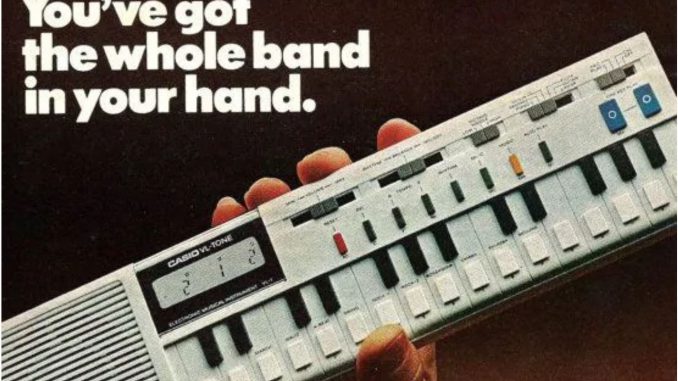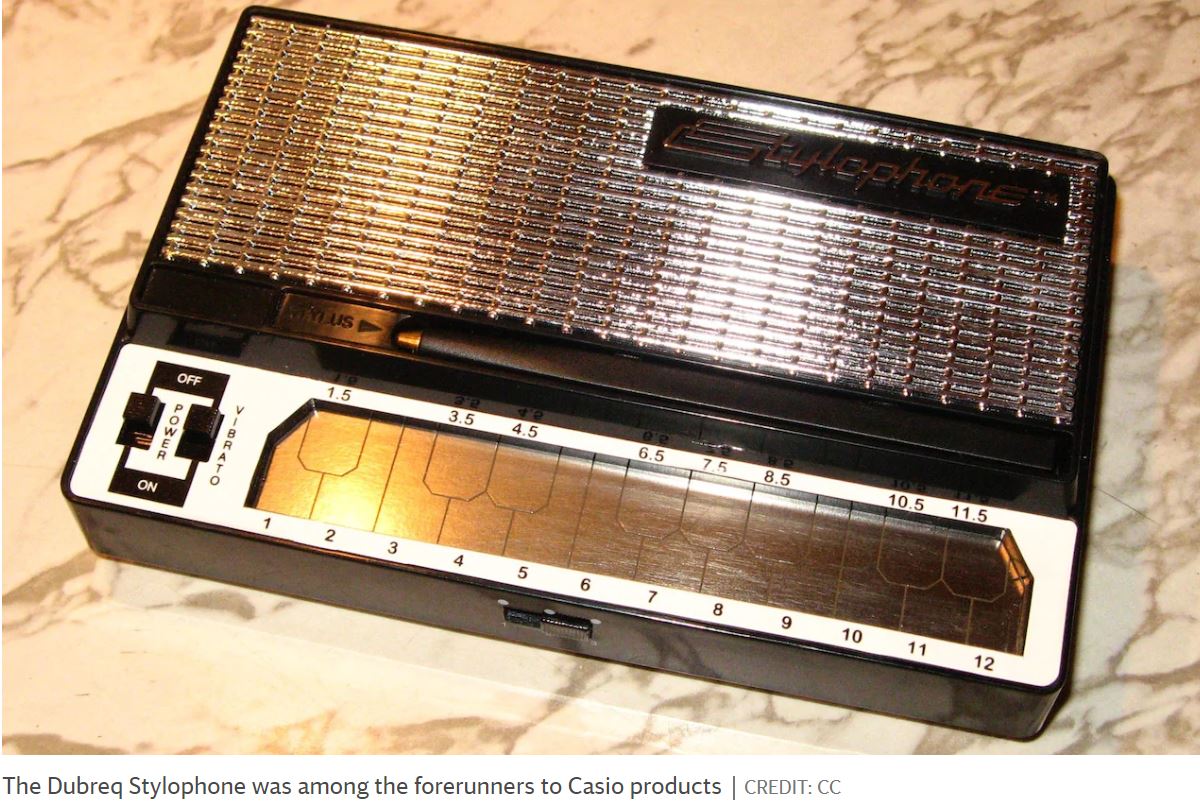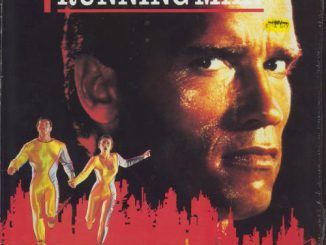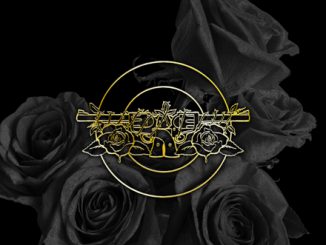
From James Hall at The Telegraph
Forty years after the Japanese keyboards launched, musicians and engineers explain why nothing can beat a good synth
Prior to the 1980s, Japanese corporation Casio was decidedly un-rock ’n’ roll. The Tokyo company was best known for inventing the world’s first electric compact calculator, and for selling a range of digital watches. But in 1980 it launched a leftfield product that would revolutionise music-making: the affordable keyboard.
The Casiotone range of synthesisers – and particularly its pocket-sized models – sold by the million. With their simple sounds and no-frills controls, the keyboards created a generation of bedroom pop stars. But the synths’ novelty value belied some serious musical chops. The instruments have featured on hits by everyone from The Human League and Salt-N-Pepa to Lady Gaga and Hot Chip. Portishead and Pulp both won the Mercury Prize for albums on which Casio synths played a key role.
Forty years after first hitting the shelves, Casio keyboards can legitimately lay claim to a place at the top table of instantly-recognisable pop instruments, a club occupied by the likes of the Roland TR-808 drum machine and the Gibson Les Paul guitar.
“Casio got something into the hands of people like me who otherwise wouldn’t have been able to afford a synth,” says Tim Wanstall, the keyboard player in Athlete, whose debut album Vehicles & Animals featured a tribute song called Le Casio (and was also nominated for the Mercury Prize). “It’s the simplicity of it. You can pick one up having never used one before and within 30 seconds you know what you’re doing.”
The idea was the brainchild of Toshio Kashio, one of Casio’s four founding brothers. He wanted to create an instrument that allowed anyone to experience the joy of making music no matter their ability, explains Hitoshi Ando, who is today the general manager of Casio’s Electronic Musical Instruments division and worked as an engineer on the first ever Casiotone, the CT-201, back in the day.
“The philosophy of Casio’s musical instrument business is to expand the musician population and to extend the fun of playing music to as many people as possible around the world,” Ando explains. “I am really happy if those wishes help people to become future musicians.”

When it launched in 1980, the CT-201 was encased in wood and was the size of a traditional synth, measuring almost a metre long and weighing seven kilograms. It caused an immediate stir, because it recreated the sound of 29 different instruments without the bewildering array of knobs and switches found on traditional keyboards. However it was the worldwide launch the following year of the pocket-sized VL-1, or VL-Tone as it was also known, that put Casio keyboards on the map.
Mini keyboards had been around for a while: US company Nucleonic manufactured a tiny piano called the Eltronovox as far back as 1954. (You had to play it through a radio which had to be tuned to 1,000khz AM.) The British company Dubreq launched the Stylophone in the 1960s. But these gadgets were essentially toys, and the VL-1 aimed higher.
No bigger than a flute case, the battery-operated VL-1 came with an inbuilt speaker, five instrument settings such as “Violin” and the shimmering “Fantasy” sound, and 10 pre-programmed rhythms such as “Waltz” and “Rhumba”. Users could play up to 100 different notes, select the tempo, and alter the pitch within two-and-a-half octaves. Tunes could be recorded and played back, and the whole machine could be plugged into a hi-fi or amplifier. As one of Casio’s magazine adverts put it in 1981: “You’ve got the whole band in your hand”. True to Casio’s roots, the VL-Tone also boasted a fully functional calculator. It originally cost around $70 (£52 then, or £200 today).
Yes, it embodied the “fun” that Kashio envisaged. But the synth’s easy functionality and naïve computerised sound were immediately recognised by bands. Kraftwerk may have helped to lend Casio some avant-garde cachet: the German band sampled an actual Casio calculator on their 1981 song Pocket Calculator. Either way, the keyboard’s limitations seemed to encourage creativity. The Human League used the VL-1 on their 1981 song Get Carter, while the German band Trio used it the following year on the Kraftwerk-lite Da Da Da.
The VL-1 also appears on Government Hooker by Lady Gaga and Rudebox by Robbie Williams. Meanwhile 2-D, the fictional member of virtual band Gorillaz, has “said” in interviews that his first ever keyboard was a Custom VL-1. It’s apt that a cartoon figure would love an instrument of almost cartoon-like simplicity. Hot Chip’s Joe Goddard has praised the Casio keyboards for their “soft, simple sound”.
Bands were aware that Casios looked cheap. Indeed, it was part of their allure. When electro-pop pioneers Depeche Mode wanted to make a point about former member Vince Clarke buying prohibitively expensive Fairlight keyboards for his new band Yazoo, they included a mini Casio synth (in this case the MT-30) in their stage set-up. A sticker on the back read “Fairlite” in an ironic dig at Clarke’s extravagance.
Athlete’s Wanstall also admits the “slightly tongue-in-cheek” pull of the Casio. “For some of the recording of Vehicles & Animals, it was like: ‘We’re signed to a major label and we’re sat in a studio that costs £800 a day and here we are with a keyboard that we bought for £5 from a flea market in Deptford. Is that really OK? Is it right that it goes through that £75,000 mixing desk?’ That was part of the fun. It was ‘What can we get away with?’” he says.
Growing up in the 1980s, Casio keyboards were the ultimate gadgets to have. They certainly democratised music-making. I remember the overwhelming excitement of receiving a white Casio PT-1 for Christmas in 1985. I couldn’t read music or play the piano but that wasn’t the point: I had a blast pretending I could.
I can still recall a song I co-wrote on it with a school friend. It was (preposterously) called New York City (I was 11 and at school in Oxford). But Kelly LeBrock films and Athena posters did strange things to young minds. The lyrics went: “I was in this café on Wall Street / I was sitting all by myself / She appeared right out of the dust / And I couldn’t resist the temptation.” Oh yes. What happened? “She made me dance / Dance like there was no tomorrow.”
A duo who enjoyed somewhat greater success with a Casio in 1985 were Jamaican reggae singer Wayne Smith and producer King Jammy. Smith’s song Under Mi Sleng Teng was the first reggae song to use a completely synthesised rhythm – and it came courtesy of a Casio MT-40 keyboard. The beat came to be known as the Sleng Teng Riddim, and was hugely influential in the development of dancehall music.
The story goes that Smith’s friend Noel Davey received the keyboard from a member of the Jamaican vocal group The Wailing Souls who had visited California. When fiddling around with Casio’s pre-programmed rhythms, Smith and Davey found a preset that produced a perfect reggae beat when slowed right down. But they lost it. After days of further fiddling, the pair refound the beat and recorded it. Producer King Jammy added a hand clap and the famous rhythm was born (the preset Casio beat in question – “Rock” – was said to have been based on the opening riff of Eddie Cochran’s 1959 rock ’n’ roll classic Something Else, but this has been denied by the company. David Bowie’s Hang On To Yourself has also been suggested as the source).
Reggae DJ David Rodigan remembers having Under Mi Sleng Teng delivered to him at Capital Radio direct from a flight from Kingston one Saturday evening. “That night I played it and the switchboard went nuts. The next day I played it at Lyceum in the Strand at a Sunday all-day rave, and the response was completely nutzoid,” Rodigan says in a special fanzine being released soon by Casio to mark the 40th anniversary of its keyboards.
King Jammy recalled in a 2015 interview how influential the Sleng Teng beat became. “Everybody wanted to record with that rhythm. It created a storm,” he said. As it was computerised, people were able to create their own music at home, cheaply. As well as being used many hundreds of times in dancehall music, the Sleng Teng rhythm crept into rave culture, featuring in Moby’s 1992 remix of The Prodigy’s Everybody In The Place and SL2’s Way In My Brain.
Casio produced model after model, each building on the last. The SK-1 from 1986 allowed users to play around with their own samples. It sold over one million units and was used to great effect by Portishead to create the otherworldly sounds on their 1994 Mercury-winning album Dummy. But it was the MT-500, which also came out in 1986, that birthed one of Casio’s biggest hits.
In the mid-1990s, Jarvis Cocker had taken a stack of old albums to the Record and Tape Exchange in London’s Notting Hill. With the store credit he received, the Pulp singer went to the shop’s second-hand instrument section and bought a Casio keyboard. “When you buy an instrument, you run home and want to write a song straight away,” Cocker told Uncut magazine in 2014. “So I went back to my flat and wrote the chord sequence for Common People, which isn’t such a great achievement as it’s only got three chords. I thought it might come in handy for our next rehearsal.”
It came in more than handy. Common People, about a sculpture student whom Cocker met at Central Saint Martins, became the defining anthem of the Britpop era. It turned Pulp into a household name, although not before bandmate Steve Mackey joked to Cocker that his demo sounded like Emerson, Lake & Palmer’s Fanfare for the Common Man, a joke that – according to the Casio fanzine – sowed the seed for the song’s eventual title. The album on which it featured, Different Class, won the Mercury Prize in 1996.
Casio continues to innovate (this was, after all, a company that once made a fortune selling a finger ring that allowed smokers to smoke a cigarette down to its nub hands-free). Its keyboards are moving with the times: models released last year also act as Bluetooth speakers, allowing people to play along to songs on the device. It has also long ditched the amateur tag. The company’s more recent Grand Hybrid piano was launched in collaboration with German piano manufacturer C Bechstein and, although digital, it features a wooden key and moving hammer mechanism. Prices start at £2,735.
But it’s the slightly shonky handheld models of the 1980s that are likely to remain best-loved. They retain their kitsch value. A Casio PT-7 from 1984 that doesn’t even work is currently on eBay for £200. Meanwhile a German man called Eric runs a website called Mini Organ that displays the 180 small synths he owns, including many Casios. In 2011 a Swedish company called Teenage Engineering released an award-winning keyboard called the OP-1 which was influenced by Casio’s VL-1. Company founder Jesper Kouthoofd has said that the keyboard’s limitations are its biggest feature, just as with those early Casios.
And yet these synths have birthed countless classic pop songs too, songs that will have weight and meaning for music fans around the world for decades to come. From the dancehalls of Jamaica to the sculpture studios of “Saint Martins college”, Casio’s 1980s keyboards have left a meaningful musical legacy. Though perhaps don’t mention those cafés on Wall Street. Every instrument produces the odd dud, after all.
You can sign up to Casio’s fanzine, released soon, at music.casio.co.uk
Collecting Pop? Vinyl Records, CDs, Memorabilia and much more… find it all at eil.com
eil.com – the world’s best online store for rare, collectable & out of print Vinyl Records, CDs & Music memorabilia since 1987




Be the first to comment